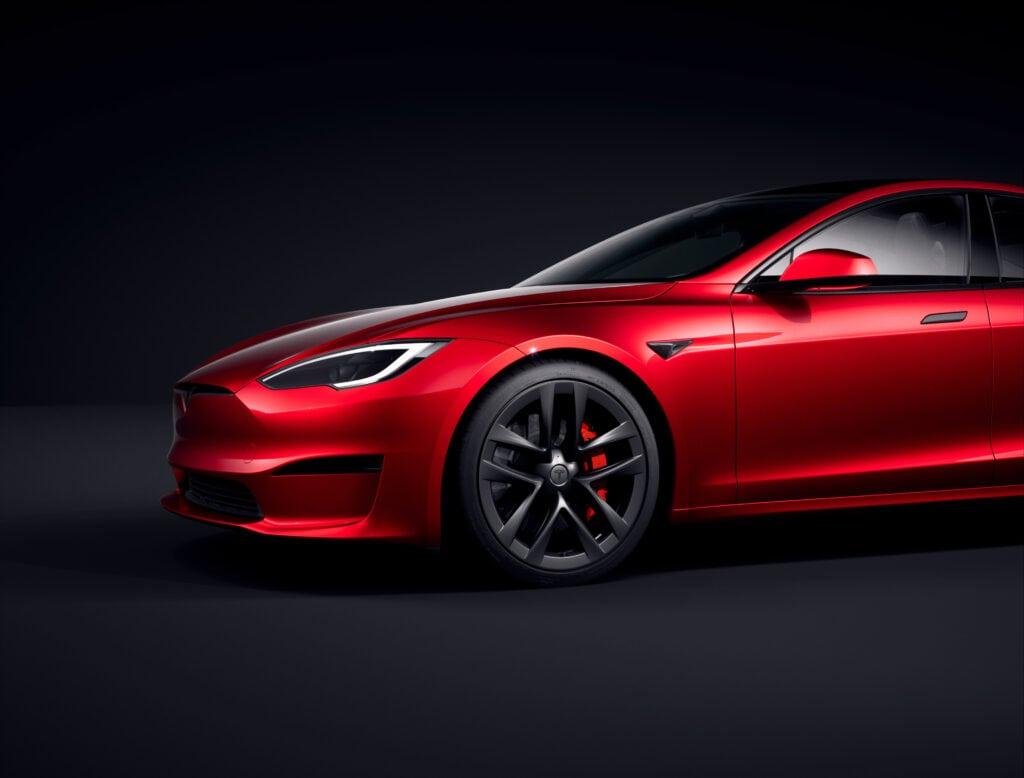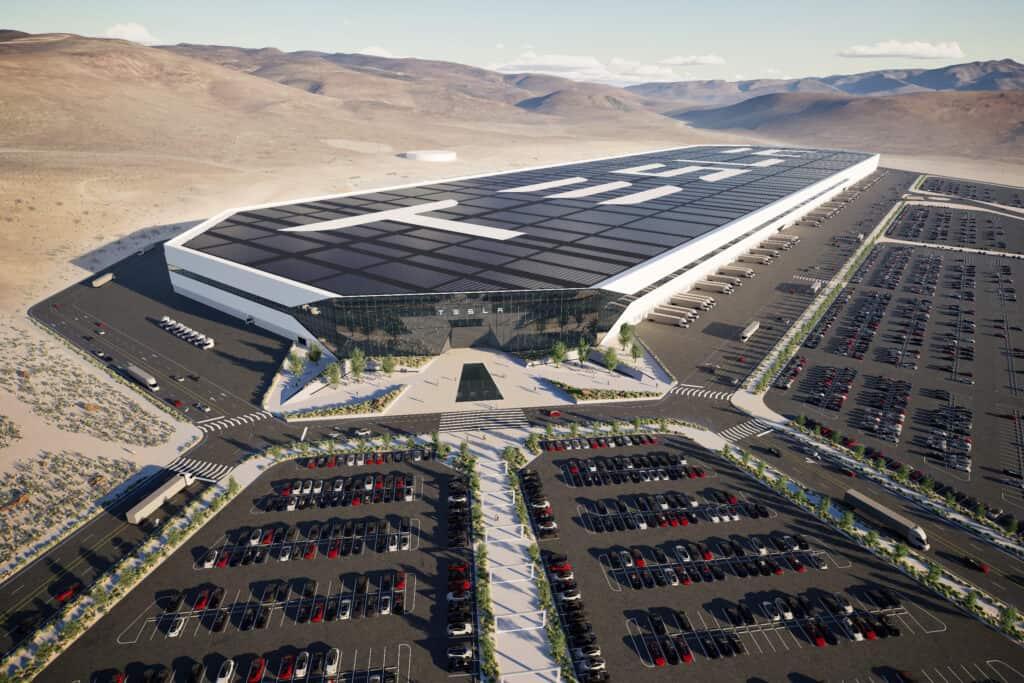Tesla, the undisputed leader in the electric vehicle (EV) revolution, has achieved remarkable success by focusing on innovative technology, high-performance vehicles, and a strategic global expansion plan. As of 2023, Tesla dominates the global battery electric vehicle market, holding the largest market share (Visual Capitalist, 2024). With the global EV market projected to reach 17.07 million units by 2028, growing at a CAGR of 9.82% (Statista, 2024), Tesla’s global strategy is crucial for maintaining its leadership and achieving its ambitious sustainable transportation goals. This article analyzes the core elements of Tesla’s global strategy, exploring its target markets, production and distribution networks, marketing tactics, and the critical role of localization. We’ll also examine case studies of Tesla’s successes and challenges in key markets and offer a glimpse into the future of Tesla’s global expansion.
 Tesla’s Global Strategy: Model STesla Model S – A symbol of Tesla’s initial focus on the luxury EV market.
Tesla’s Global Strategy: Model STesla Model S – A symbol of Tesla’s initial focus on the luxury EV market.
Tesla’s Target Markets and Global Segmentation Strategy
Tesla’s initial target market focused on affluent, environmentally conscious consumers in developed regions, drawn to the luxury and performance of the Model S and Model X. However, to capture a larger share of the expanding EV market, Tesla has adopted a broader segmentation strategy:
Expanding into Wider Income Brackets
The introduction of the Model 3 and Model Y, more affordable options, has significantly expanded Tesla’s reach into wider income brackets, making electric vehicles accessible to a larger consumer base.
Prioritizing Environmentally Conscious Regions
Tesla strategically targets developed regions in Europe and Asia with high concentrations of environmentally conscious consumers and government incentives for sustainable transportation. These regions often have well-developed charging infrastructures and a higher willingness to invest in EVs.
Maintaining a Presence in Niche Markets
While expanding its reach, Tesla continues to cater to the niche market of luxury car enthusiasts with high-performance vehicles like the Roadster, reinforcing its brand image as an innovator in advanced electric vehicle technology.
Tesla’s Global Production and Distribution Network
Tesla’s global production and distribution strategy focuses on strategically located Gigafactories and a controlled customer experience network.
Gigafactories: Strategic Global Positioning
Tesla’s Gigafactories, massive production facilities strategically located worldwide, minimize transportation costs, meet growing regional demand, and address variations in customer preferences and government regulations. The current network includes factories in Fremont, California; Sparks, Nevada; Berlin, Germany; Shanghai, China; Austin, Texas; and Buffalo, New York. Furthermore, Tesla’s planned Gigafactory in Monterrey, Mexico, underscores its commitment to global expansion (Baker Institute, 2023).
 Tesla’s Global Strategy: Gigafactory NevadaTesla’s Gigafactory in Nevada – Part of a global network enabling localized production.
Tesla’s Global Strategy: Gigafactory NevadaTesla’s Gigafactory in Nevada – Part of a global network enabling localized production.
Company-Owned Stores and Service Centers: A Controlled Customer Experience
Tesla’s direct-to-consumer approach, through company-owned stores and service centers, ensures consistent brand messaging, high-quality customer care, and a streamlined sales process, eliminating the complexities of traditional dealerships.
Strategic Partnerships: Navigating Regional Nuances
While prioritizing direct-to-consumer distribution, Tesla strategically partners with local distributors in specific regions to navigate complex regulations, overcome language barriers, and leverage existing distribution networks, while maintaining control over the core customer experience.
Tesla’s Global Marketing and Branding Strategy
Tesla’s marketing and branding strategy positions the company as a leader in innovation and technological advancement within the EV industry.
Direct-to-Consumer Marketing: Controlling the Narrative
Tesla leverages its website, social media platforms, and company-owned stores to connect directly with potential buyers, ensuring consistent brand messaging and fostering a direct relationship with its customer base.
Emphasizing Innovation and Technology Leadership
Tesla’s marketing highlights its cutting-edge technology, including Autopilot, advanced battery technology, and superior performance, differentiating it from competitors in the EV market.
Leveraging Social Media and Elon Musk’s Influence
Tesla utilizes social media, particularly through the prominent voice of CEO Elon Musk, to generate buzz, announce new product launches, and showcase technological advancements, creating significant brand awareness.
Cultural Adaptation and Localization: Resonating with Diverse Audiences
While maintaining a strong global brand identity, Tesla recognizes the importance of adapting its marketing messages to resonate with diverse cultural contexts. Effective localization of marketing materials, considering language, cultural nuances, and local regulations, is essential for building trust and driving sales in new markets.
The Critical Role of Translation and Localization in Tesla’s Global Strategy
Tesla’s global success depends heavily on effective communication that goes beyond simple translation. Localization, the process of adapting content to specific cultural contexts, is crucial for building brand trust and driving sales internationally.
Addressing Technical Nuances
Accurate translation of technical specifications, such as range, battery capacity, and charging times, ensures consumers receive clear and relevant information in their native language.
Adapting Cultural References
Localization involves adapting humor, metaphors, and idioms used in marketing materials to resonate with the target audience, avoiding misinterpretations and ensuring cultural sensitivity.
Considering Driving Styles and Regulations
Tesla adapts its marketing and user interfaces to reflect varying traffic regulations, road signage, and driving styles across different countries, enhancing user experience and safety.
Case Studies: Tesla’s Global Successes and Challenges
Analyzing Tesla’s performance in specific markets reveals valuable insights into its global strategy.
Norway: A Model EV Market
Norway’s high EV adoption rate, driven by government incentives, extensive charging infrastructure, and environmentally conscious consumers, has made it a highly successful market for Tesla.
China: A High-Growth Market with Unique Challenges
China’s large market size and government support for EVs present significant opportunities for Tesla. However, intense competition from domestic players requires continuous innovation and effective localization strategies.
The Future of Tesla’s Global Expansion
Tesla’s future global strategy will focus on several key areas:
Expanding into Promising New Markets
Tesla is eyeing new markets with high EV adoption potential, including regions in Europe and Southeast Asia, capitalizing on growing demand and favorable government policies.
Addressing Emerging Challenges
Competition from established automakers and potential trade tensions require Tesla to maintain its innovation edge and adapt its supply chain strategies.
Continuing Product Diversification
Introducing more affordable models and expanding into new vehicle categories, such as trucks and commercial vehicles, will further broaden Tesla’s market reach.
FAQ: Common Questions about Tesla’s Global Strategy
What are the key components of Tesla’s global strategy?
Tesla’s global strategy focuses on targeting wider consumer segments with diverse models, strategic production and distribution through Gigafactories and direct sales, innovative marketing that emphasizes technology leadership, and cultural adaptation through localization.
Can you provide examples of Tesla’s global strategy in action?
Tesla’s success in Norway and China demonstrates the effectiveness of its strategy. Norway’s robust EV infrastructure and government incentives have created a receptive market, while Tesla’s localization efforts in China address the specific needs of that market.
What challenges does Tesla face in its global expansion?
Tesla faces increasing competition from established automakers and potential disruptions from global trade tensions. Navigating these challenges requires continuous innovation and adaptable supply chain strategies.
What is the future direction of Tesla’s global strategy?
Tesla’s future strategy involves expanding into new markets with high EV potential, diversifying its product portfolio, and maintaining its commitment to sustainability and technological innovation.
Tesla’s global strategy, driven by innovation, strategic expansion, and a focus on customer experience, has positioned the company at the forefront of the electric vehicle revolution. By continuously adapting to evolving market dynamics and addressing emerging challenges, Tesla is poised to maintain its leadership in the global automotive industry.
